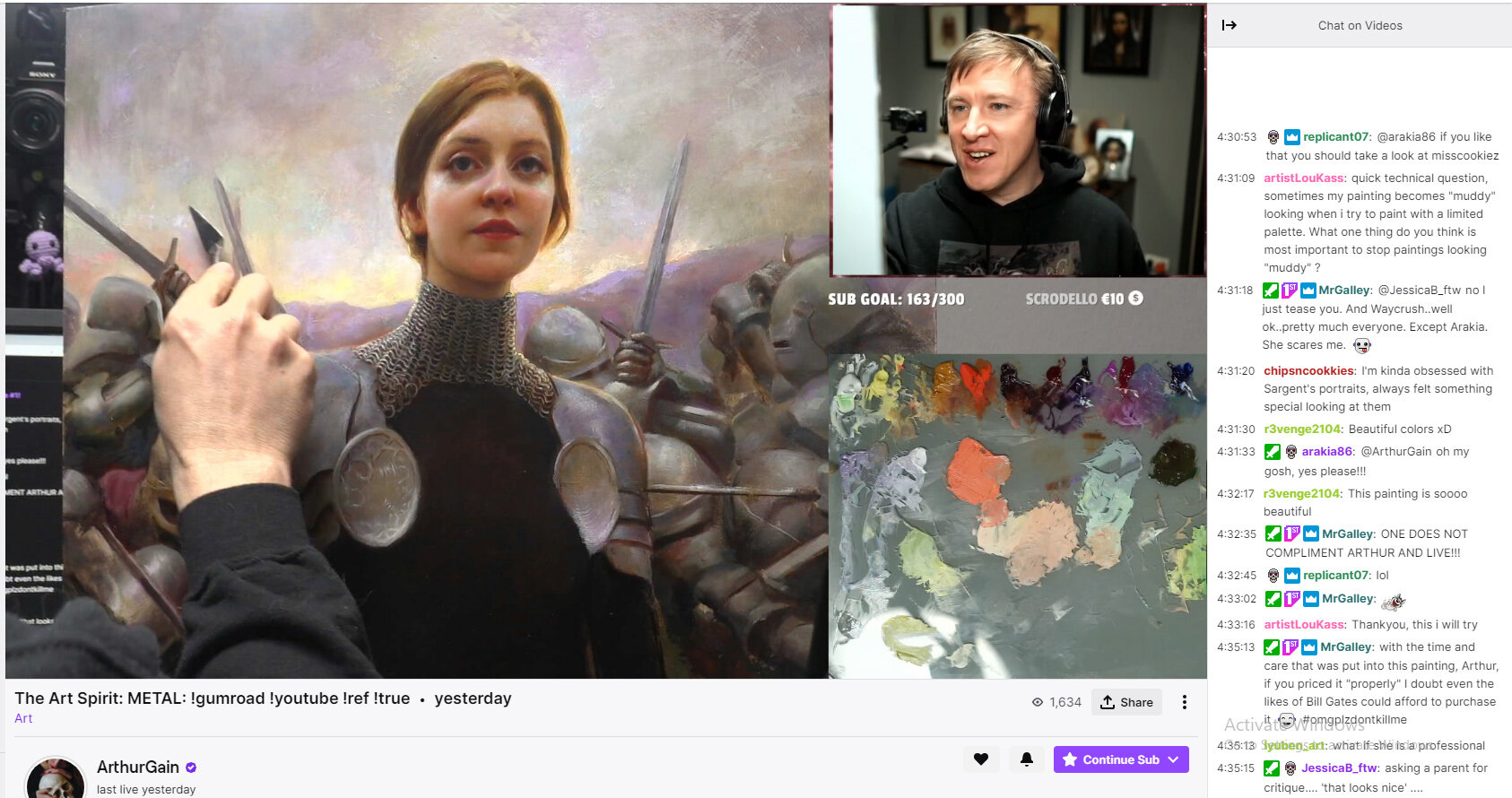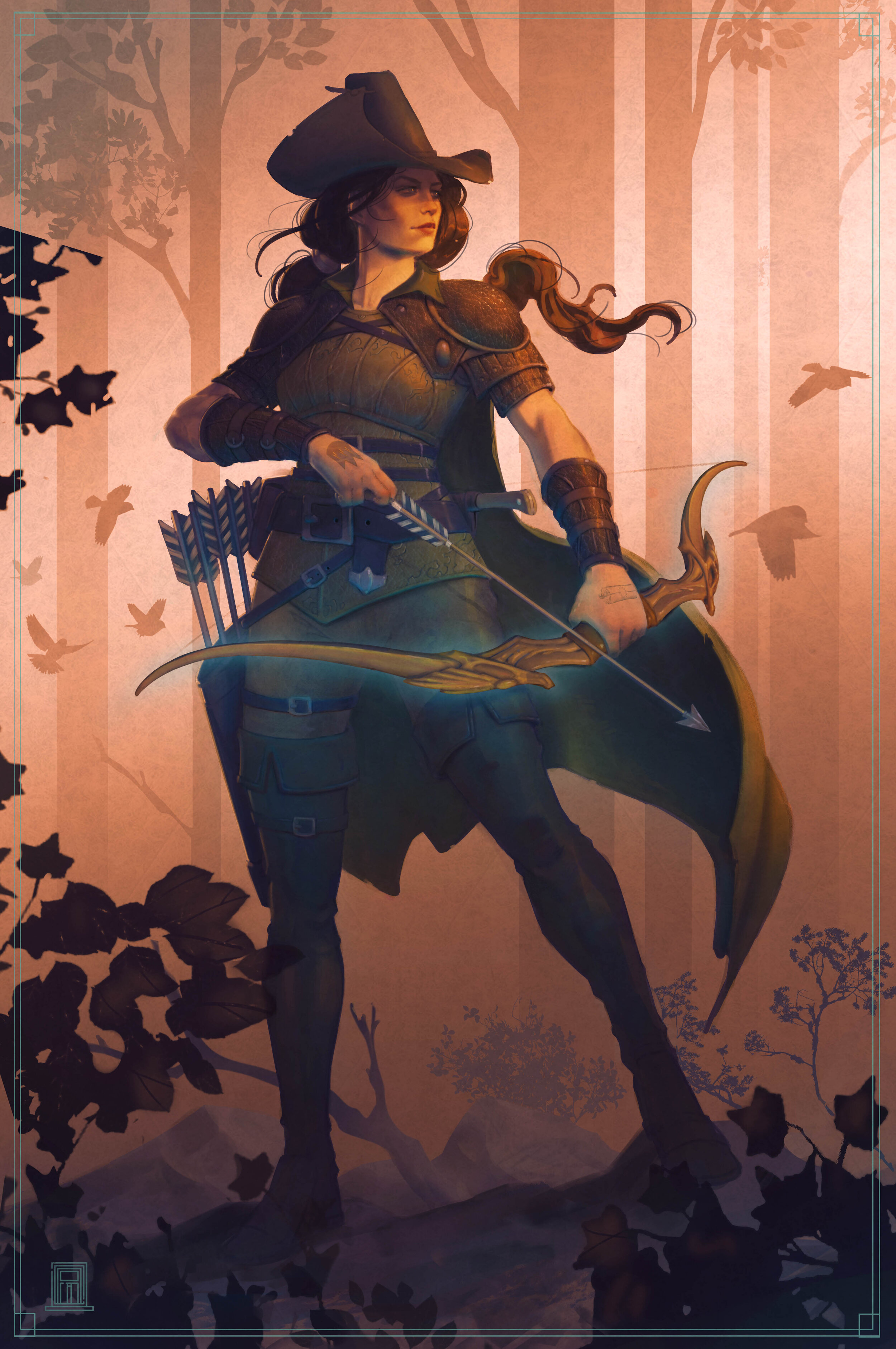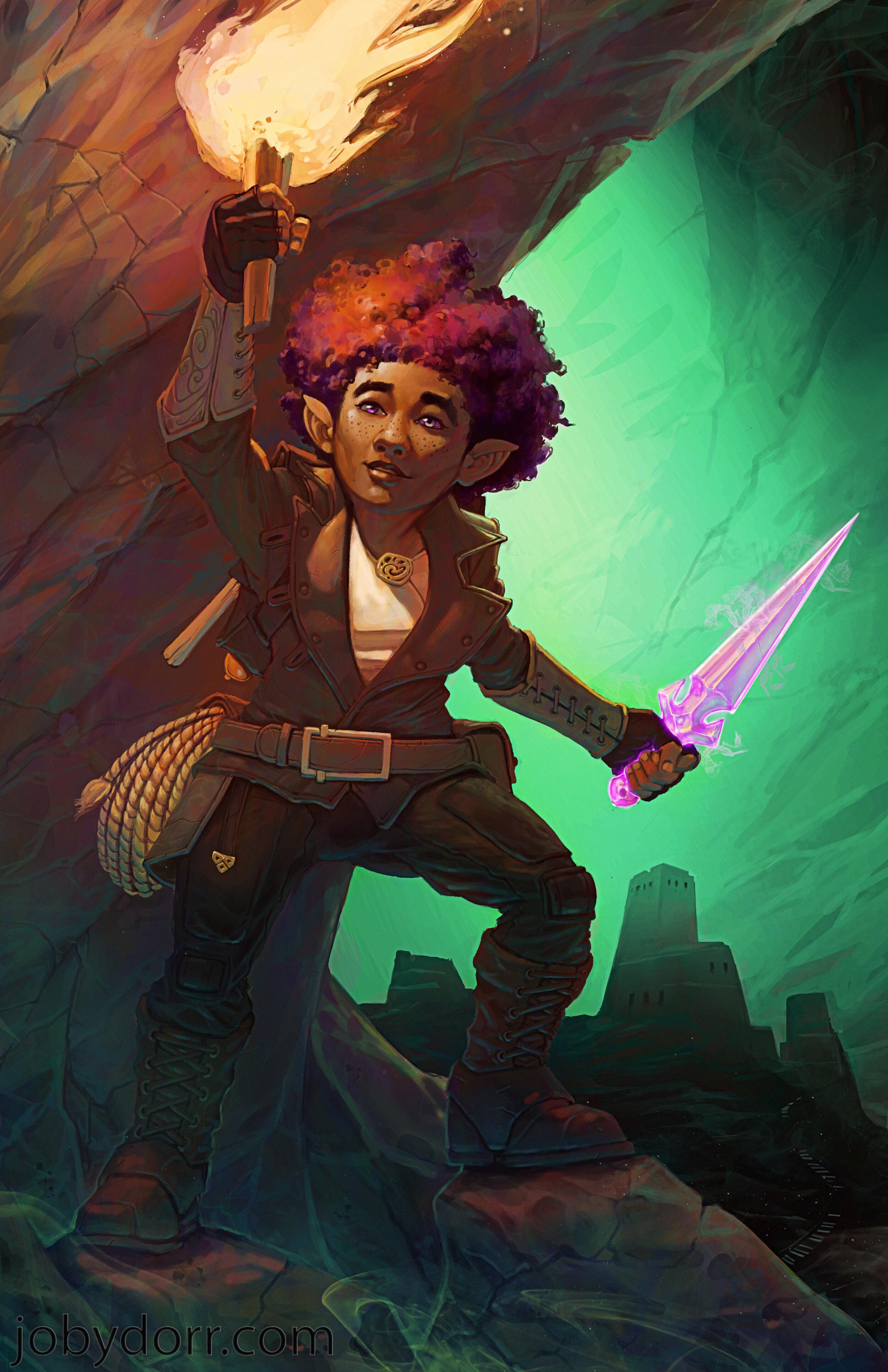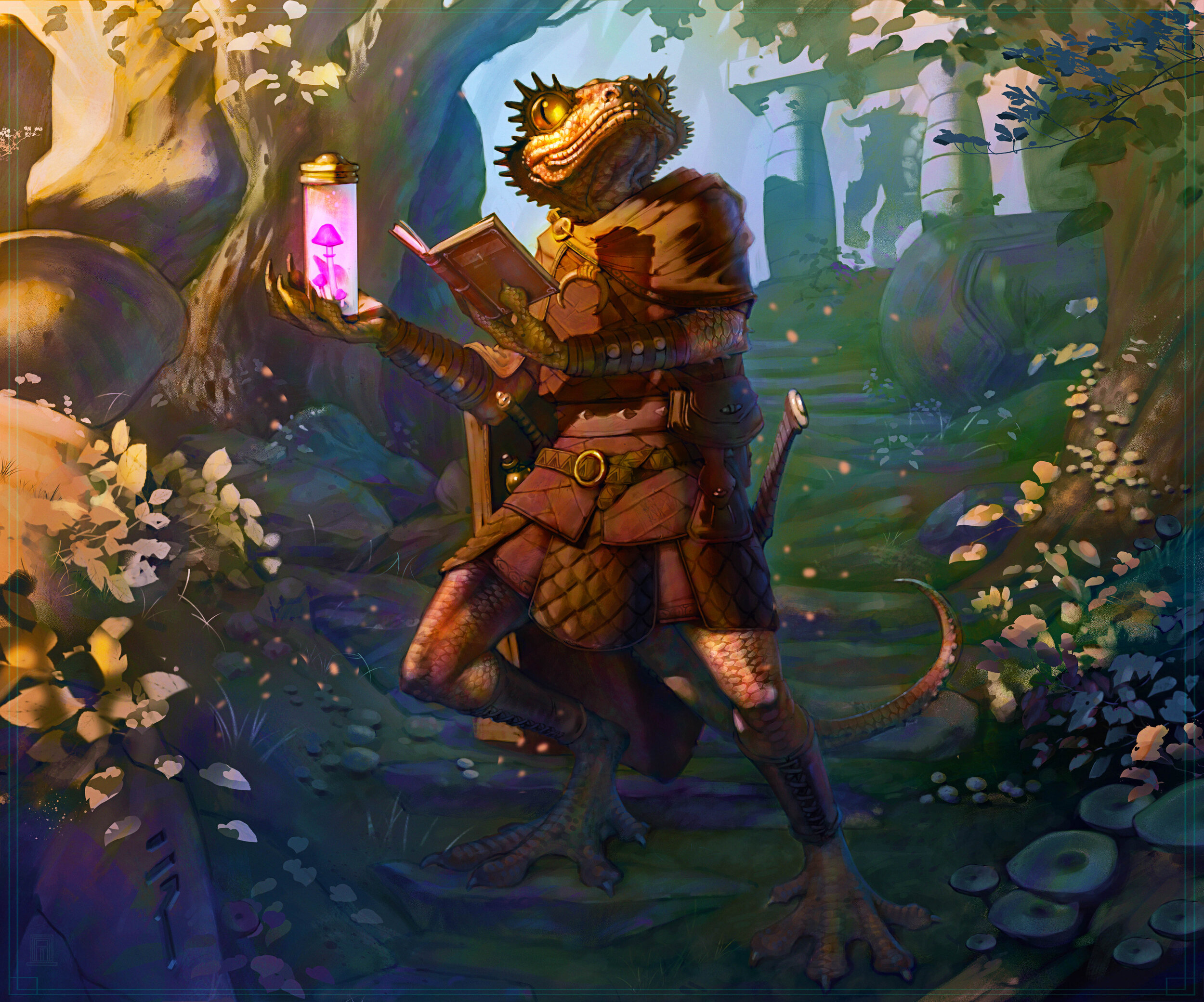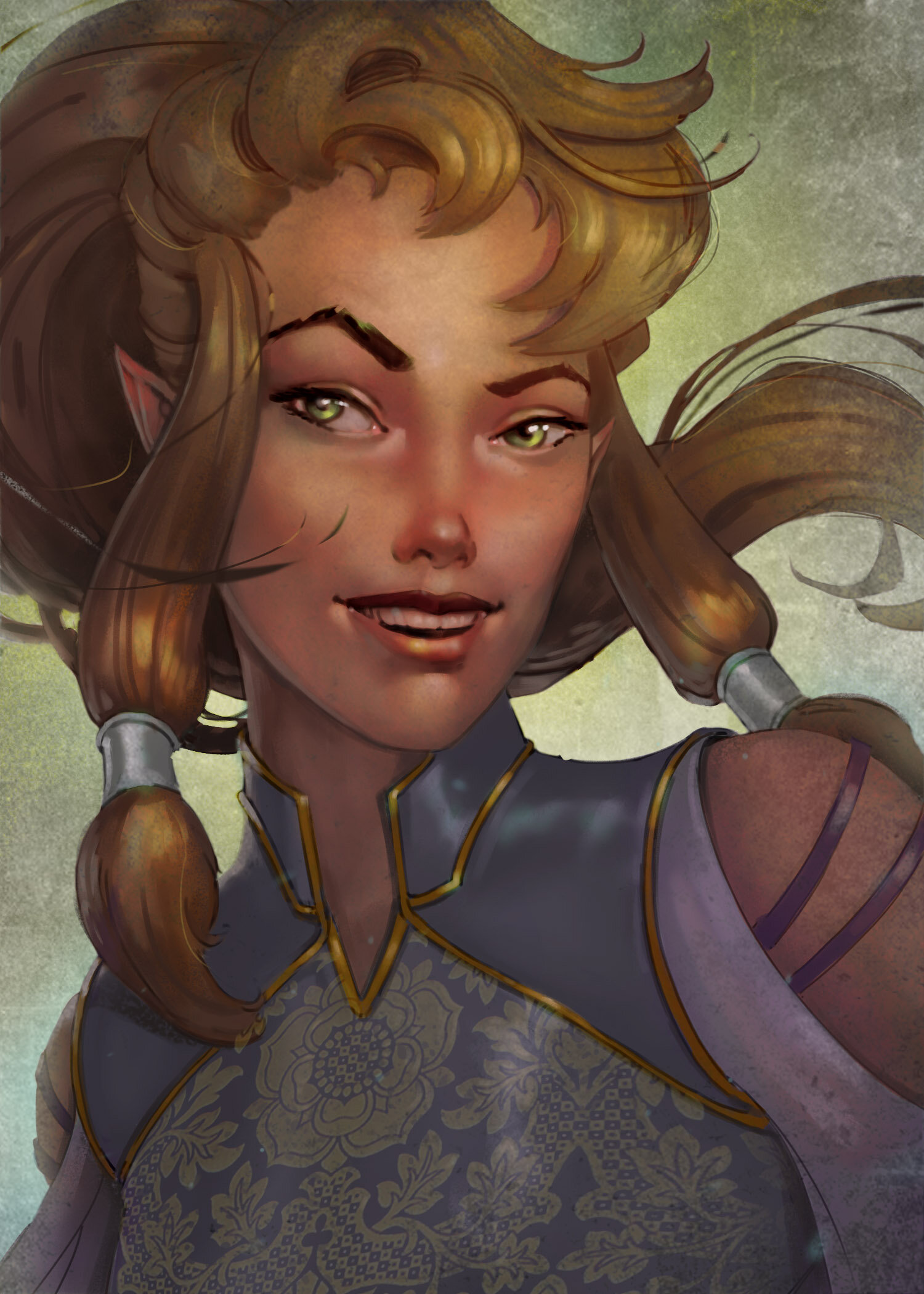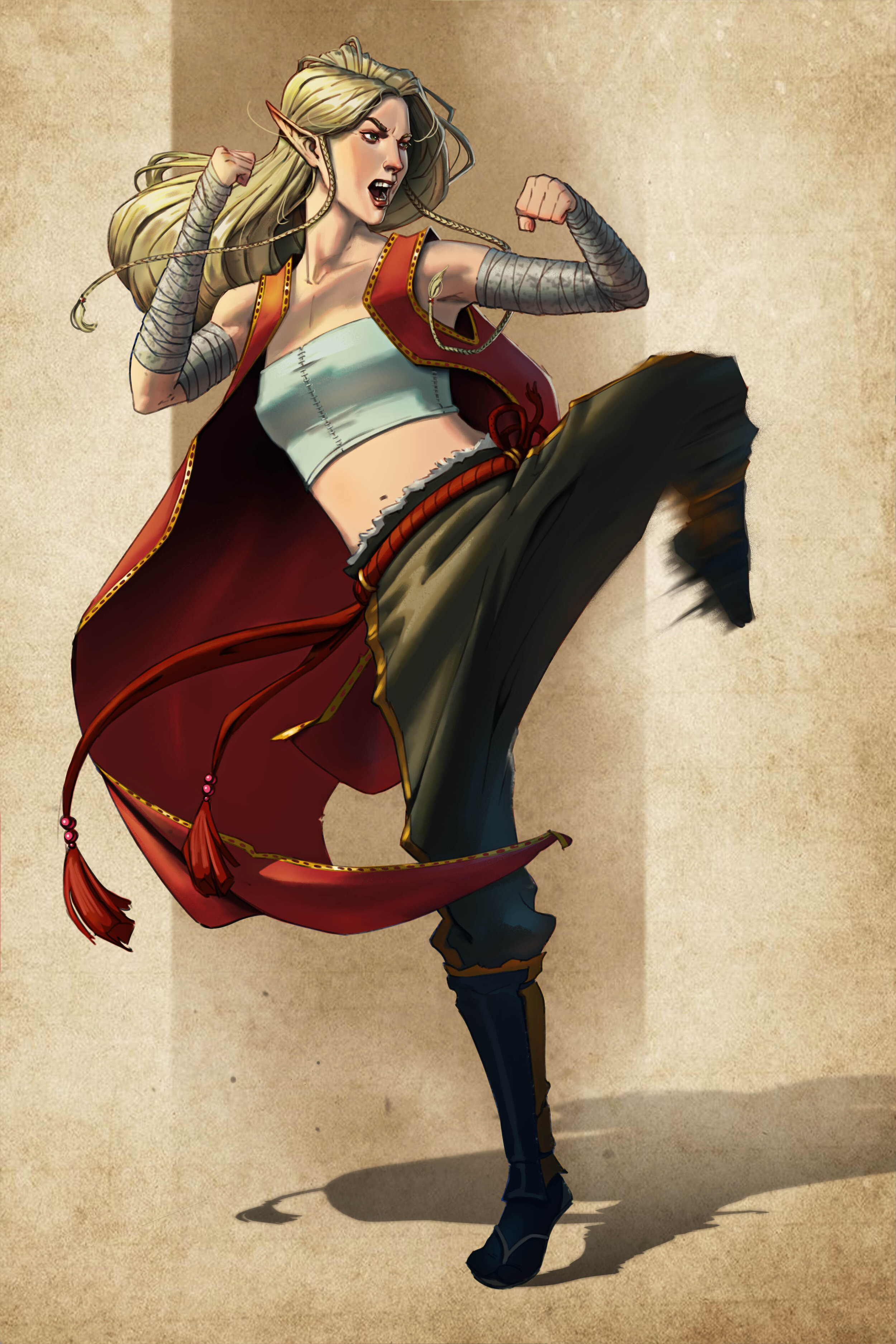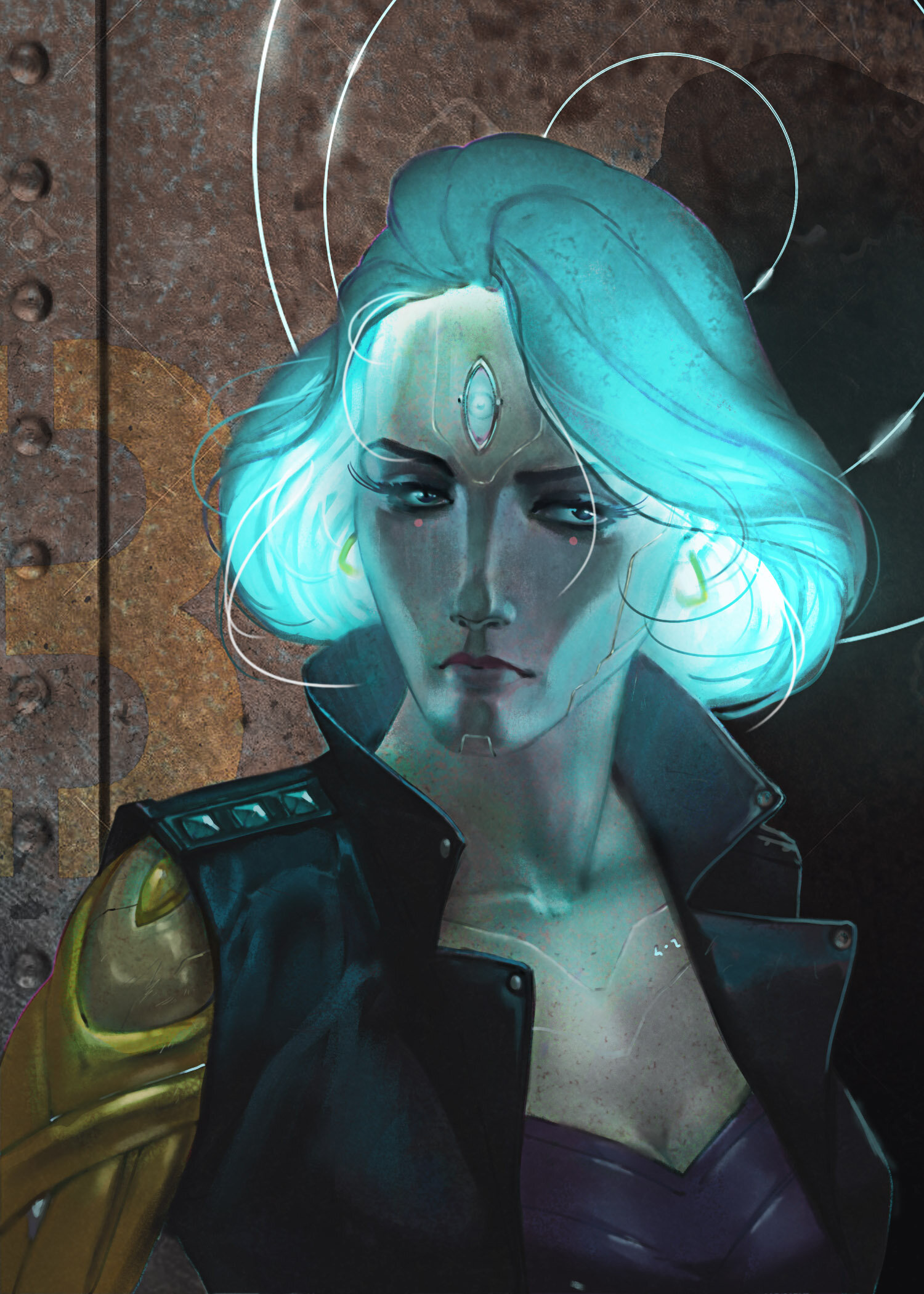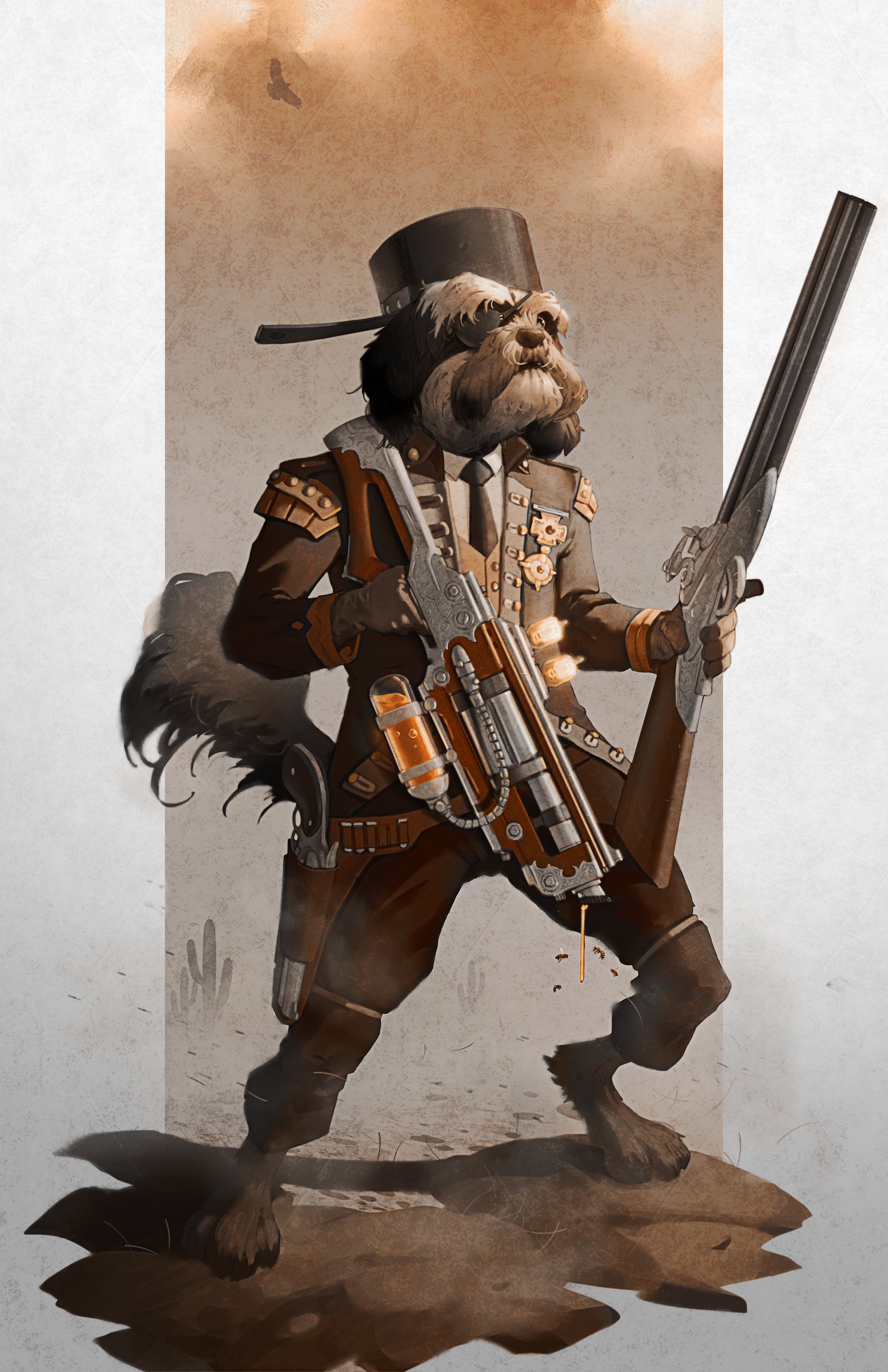How To Stream Art on Twitch and Why Every Artist Should
/Most people know Twitch as a live streaming platform for gaming but it’s not just for gaming anymore! there is a huge variety in the various Twitch categories that you can find on the website.
With a computer, stable internet, and an inexpensive webcam, you’re ready. Streaming art offers new marketing and community-building opportunities for artists. Among the various streaming platforms, Twitch is the largest and the amount of people finding creative streams is growing steadily.
Even if you are terribly shy, there isn’t any reason why you cant be streaming on Twitch. Read on and I will prove it!
Why Stream Art On Twitch?
If live-streaming art is something you want to do then certainly, there is no harm in trying a few of the different streaming platforms. It is possible you might find a streaming service that appeals to you more than Twitch but there are a few reasons why streaming in the Twitch creative category might be the best choice. To name just a few:
A larger number of viewers means more opportunities for new people to see your work.
More options for ways to interact directly with a safe non-toxic community and make real, lasting relationships.
A large, continually growing group of peers who are excited to support and nurture your artistic growth.
More opportunities to generate revenue through sales, commissions, and marketing new products and services.
Small supplemental income through donations, subscription models, and other perks that Twitch makes available.
Is Twitch Good For Artists?
In a time when many people are feeling the stress of the more traditional social media platforms, the Twitch art community offers a haven for those looking for real connections while still being able to promote their work
The Twitch creative community is unparalleled in its positivity, support, and enthusiasm. It’s hard to find places on the internet with this level of warmth and generosity for artists.
You only need to hang out in an art stream for a short while to start feeling the welcoming attitude. It is truly hard to find negativity and toxicity there.
Besides the powerful community, the next best thing about streaming your art on Twitch is the ability to find new people who enjoy your work and want to support you financially as well as emotionally and mentally. Streaming art on Twitch allows you to market your work while still being able to feel like a human being rather than a cog in a marketing machine.
Is It Hard to be a Twitch Streamer?
A lot of people new to streaming develop overly grand ideas about what their stream should be. Don’t compare yourself or your expectations to what you see other people are doing.
It is not hard to be a Twitch streamer as long as you don’t over-extend yourself. Maintain healthy expectations that are realistic for your personal disposition You don't have to do anything but be yourself and if you are consistent, the audience will grow.
Do not try and make this your job. You are not streaming to make a living, you are making a living while you are streaming. Streaming is just a part of the experience with lots of benefits for your business.
The key is to be very honest about what kind of person you are and that will inform the kind of stream you will make. Be true to that and the rest will be relatively easy. I say “relatively” easy because these things are often easier said than done.
A strong piece of advice is to immerse yourself in a supportive community that you can rely on for feedback and objective input. Your friends will help you keep things in perspective and make sure you arent over-doing it.
What Do I Need to Stream on Twitch?
You do not need a lot of fancy equipment to stream on twitch. If you have a computer and a stable internet connection, you are already halfway there. From there you can make it as elaborate and fancy as you like. Here are the essentials you need to get started:
1. Computer. Streaming can be a little bit hard on the memory and CPU capabilities of your computer so you want to be sure your system can handle the requirements of the software you are using. Generally speaking, any mid-tier computer (PC or Mac) with at least 8G of RAM, an i7 or equivalent CPU, and a decent graphics card will do ok. If you plan on running other memory-heavy programs while streaming like Photoshop, it would be highly recommended to install 16G RAM.
2. Twitch account. The first thing you will want to do is open an account on the Twitch.tv website. This is incredibly easy to do, you only need to follow a few steps. Here is a great video that shows how fast and easy it is, step-by-step, along with a few navigation tips:
3. Streaming software. This is what actually lets you show your art to the world. The most commonly used streaming program is OpentBroadcasting Software (OBS) and its open-source variant StreamLabs OBS. Both of which are completely free and very easy to install but please note that only the classic OBS software is available for Mac users, not Streamlabs OBS. Here is a video that can walk you through the process from download to install to set up.
4. Cameras are a must have if you are streaming your traditional art process because you need something to show the art itself! But even if you don’t need a camera for the art, it is nice to show your face to the world.
The most commonly used webcam for streaming is the Logitech C920. This camera has a lot of great features that will provide a high-quality image for your stream. If you only want a camera on your art you can just have one or if you want one on your face too, you can set up a second. If you do use 2 of these be aware that there are sometimes conflicts when identical cameras are added into OBS. If you experience this make sure you plug in and add them to your software inputs one at a time. This camera also has a built-in microphone that has decent sound quality so you could even do without the microphone to begin but at some point, you will probably want to upgrade your setup to include a good mic.
Another option is to use your smartphone! If you want to keep your initial start-up costs low you can mount your phone on a desk tripod or scissor arm then use it as a source in the streaming software. Watch this short video for an easy to follow guide on using Android or iPhone as a webcam to stream:
5. Microphone. When deciding what kind of mic to get give some thought to what kind of environment you will streaming in. There are 2 main types of microphones and each one will have advantages in different settings.
Condenser microphones will be able to pick up sounds within a wide area. These microphones offer good sound quality and do not require you to direct your voice right at the pick-up. This is good if you are streaming in a relatively quiet environment and want to be able to move around a lot. However, this might be a disadvantage if you have a lot of unwanted background noise like kids, traffic, planes, etc.
Dynamic microphones will only pick up what is directed at it. This is great for environments where you want to eliminate the background noise. These mics will also provide excellent sound quality within the range they are set up for. You will need to speak directly into them for best sound though so you will not be able to move around too much.
The most popular mic in the streaming and podcast world is the Blue Yeti Microphone. It is a condenser-style mic, very affordable and high quality.
Whichever mic you choose, there are settings in some streaming software like Streamlabs OBS which will allow you to apply filters like noise gates and amplifiers to improve sound quality for your specific needs.
Lighting. While this part is not necessarily essential there are many advantages to making sure you have good lighting. If you are a traditional artist, it is likely you already have great lighting in your studio and this part of streaming will not take much more adjustment. If that’s not the case you may consider investing in an inexpensive lighting setup that will adequately illuminate your environment. A good option is a ring light as these are designed to cast light in a large area and can be configured for a variety of scenarios.
Aside from the essential gear, you will also want to consider the kind of art you will be streaming and how you want to set up your cameras and microphones to best capture the experience for your viewers. Whether you are a digital artist or using traditional mediums, there are a variety of options for how to set up your stream so please read on for an overview of how to optimize your set-up for each.
How to Live Stream Digital Art
Of the 2 types of art streams, digital art will be the easiest to set up but stream but it will also be harder on your computer hardware so you will want to be sure you have enough power to accommodate all the demands.
Aside from the essential gear of computer, camera, and microphone you only need to include your preferred digital painting hardware and software. The hardware could be a Wacom or similar tablet, a Surface Pro, or an iPad, while the software could be any of your favorite programs and apps.
Graphics and Screen Tablet like the Wacom are very easy to incorporate into the stream. From watching the set-up videos above you will be familiar with how to add sources to your stream. The screen you are looking at while you draw will be added as a “display capture” and it will then show up in the streaming software and be ready for broadcast.
iPads have a few extra options. You can actually stream directly from the iPad without any other hardware or software! This is a great option for mobility or if you want a very lightweight, easy-to-set-up streaming experience. If you want to incorporate it into a more elaborate streaming set-up using stream software, you will need extra software that will mirror the iPad screen to one of your monitors. When I stream from my iPad I use a program called ApowerMirror. It isn’t free but it is reliable and easy to set up. For a free option with slightly fewer options, you can try a program called LetsView.
Once your tablet is recognized by the streaming software you are using you are ready to show your art to the world!
How to Live Stream Traditional Art
If you work in one of the many traditional mediums or you are a crafter of any kind, your stream set up will be a little different. The most important component will be setting up a camera in a way that will clearly show your work. This might require some adjustments to your lighting or adding supplemental lighting but the most important thing is for the art to be centered and clearly visible.
Here are some things that will be easy to set up and will create the best experience for your viewers.
Tripods are going to be a great option for getting your camera into position for best art viewing especially if you work at an easel or upright canvas. A tripod will allow you to position the camera you want to point at the art in just the right way so it will adequately showcase your art while not getting in your way.
Desk clamp scissor arms might be a better option if you work on a less inclined, flat surface or if floor space is limited. Clamping the scissor arm to your desk and positioning the camera above your work will lift it high and keep it out of your way while capturing the art. A nice feature of the webcam I listed above is the ability to vertically flip the image. This allows you to position the camera so it comes up from behind your work but will still send an upright image to the streaming software.
Boom arms are an added luxury rather than a first-pick option. Their greatest advantage of a boom arm is that they mount on a wall thereby lifting all the equipment they carry off the ground and free your floor space from any stands or extra obstacles. By suspending lighting and/or cameras higher up, you will also have more freedom of movement to find the most ideal position for your equipment.
How to Live Stream Art From Your Phone
Twitch offers a live stream app for free on both Android and iPhone! This is a great option if you are unsure about how streaming will feel and you just want to dip your toes in.
All you have to do is download the free Twitch app, sign in to your account, point the camera at the art, and hit “Go Live”.
That’s it! You’re streaming!
How Do I Get Viewers On Twitch?
This might be the intimidating part for a lot of people. You might confront the fear that you will start streaming and no one will want to watch.
The answer might seem trite and cliche but it really is true: just be yourself. Don’t feel pressured into being a high-energy character if that’s not your style. People want to see genuine human beings, not slick entertainers.
There’s no right or wrong way to do it. Find a method that makes you comfortable and people will find you.
That being said there are some things you can do to make it easier for people to find you and get involved. Some of the more helpful things to get the ball rolling will be:
First and foremost: Start Hanging out and ask lots of questions! The best thing you can do before getting into streaming is getting into the streaming community. See what other art streamers are doing and how they have their channels set up. A great place to start would be to click here to follow Art_of_Li a freelance artist who is easily one of the nicest people on Twitch and whose community is very warm and very welcoming.
Stream on a regular schedule. It’s not something you should feel a lot of pressure to maintain the longer you have been streaming but it’s very helpful in the beginning when people are just finding out about you. And “regular schedule” can mean a lot of things. Click here to check out JayAxer, an artist for Blizzard Entertainment. He only streams once a week and has a strong following. it doesn’t have to be a second job, just be predictable!
Talk about your work. It can be hard to talk about ourselves or our work so, don’t feel too much pressure to include a lot of chatting, especially at first but try it out and practice it. You will get better at it the more you try it and it is a wonderful way to draw people into your stream and keep them engaged. Here are a few ideas for ways to start the conversations
Regularly mention that you are open to questions from viewers, then answer questions about your work in real-time.
Talk about your inspirations, motivations, or what your thought process is as you are working. Discuss your materials and why you choose certain techniques
Show your materials on camera, talk about brands you like and where you get them
Don’t be afraid to just talk to yourself. This might seem foolish at first but it’s quite common and no one will think it’s odd. If there isn’t a lot of discussion happening, just let your thoughts come through, and as people begin watching they will interact more and more.
Be patient. It can take some time for things to start moving so don’t worry about the numbers! This isn’t a road to getting famous and rich, this is a slow winding path to making strong connections. Enjoy the process and have fun! Click here to see Sal, TheDarkCloak. Sal has a smaller stream (according to the numbers) but his community is very close and very active. It’s all about the joy of talking with friends and colleagues you respect.
How do I Make My Twitch Stream More Entertaining?
So, now that you have some basics down, you might be thinking you ARE the type of person who is more outgoing and gregarious. You might think “How can I stand out here? How do I make my Twitch stream more entertaining?” and luckily there ARE a lot of things you can do to add a little more entertainment to your stream.
Interact with viewers. Again, this should be low pressure. you don’t have to be a hilarious comedian or a super witty intellectual. Just saying “Hi, how are you today?” is enough to start things off. It’s also ok to talk a lot about the things that interest you. This isn’t a popularity contest, it’s about finding people who like you and like your work. Click here to watch CaveGeekArt, the stream of Kfir Mendelson. Kfir is very laid back about his stream and describes himself as “an artist who streams, not a streamer who does art.”
On-screen games for viewers. There are lots of little add-ons you can connect to your stream that allows for interaction between the people viewing. Click here to see the stream of RussellStweART. you’ll see a lot of little avatars that move around on the screen. These avatars can earn points, have battles, and all kinds of other fun things.
Viewer rewards. Just by watching a stream, you will be earning viewer points. Lots of streamers have point redemptions set up to offer various types of rewards for watching. Click here to visit the stream of StumpyFongo who offers a variety of rewards for channel points including, short critique sessions, speaking in Spanish, doing push-ups, and even cosplay!
Community activities. You can pick a day that’s all about a group activity the whole community can join in. Click here to check out PinkeyePoxy who hosts a group drawing night every Friday. These have become incredibly popular and many in her audience will tell you those nights alone have done more for pushing their artistic growth than almost anything else. Not to mention the real bonds that have been made from the sense of camaraderie
Play music. It’s a great idea to include a soundtrack with your streams. if you play music from a desktop app like Spotify, the streaming software will automatically pick it up.
A note about playing music on a live stream: playing copyrighted music can get you in big trouble. Check out Twitch’s rules on playing music in live streams: https://www.twitch.tv/p/legal/community-guidelines/music/
There are playlists on Spotify and YouTube that are royalty-free and safe for streaming.
One of my favorites on Spotify is this collection of lo-fi instrumentals:
On YouTube, this is a great music collection video, full of epic soundtracks from video games:
These ideas are just the tip of the iceberg! The more you spend time in the creative section the more you will see how creative people have gotten with their streams. There’s really no limit to what you might come up with.
How Do Artists Make Money on Twitch?
Streaming gives you the opportunity to build an audience who loves to watch you make art. These are more than just consumers, they become friends who want to help support you.
Friends and dedicated fans don’t require slick sales and greasy marketing techniques and streaming is a great way to create that sort of community. Likely your viewers will be a mix of fellow artists as well as collectors, and each may be interested in different products or services
Having this variety of viewership opens the opportunities to provide educational material via sites like Skillshare and Patreon or generate excitement for new work, promote a website or anything else your creative mind can think of.
Here are a few easy to implement ideas to begin monetizing your art streaming content:
Donations can be received by connecting your Twitch channel and a PayPal account. This gives viewers the opportunity to directly contribute monetary support to your stream. Watch this short video to learn how to set up a donation feature for your stream.
Bits are a type of virtual item that is a fun way for viewers to support their favorite artists once they have earned the Affiliate status on Twitch. They don’t represent a large amount of money but they do add up.
Subscriptions are another perk offered to streamers who have received their affiliate status. A subscription to a Twitch channel rewards the viewer with custom emotes that can be used site-wide as well as on Discord. Along with the emotes, streamers can choose to supplement the different tier rewards with any number of other fun gifts. This might include exclusive opportunities to receive unique items, secret channels in a Discord server, or special requests. Anything is possible, so get creative!
Amazon Affiliate status means any time someone goes to amazon using your affiliate links, you will receive a small percentage of any purchase they make while shopping. This feature is not limited to Twitch either! You can include affiliate links on any personal site! There are a few affiliate links in my blog posts and if you purchase an item using those links (it doesn’t even have to be the item linked in the post) that helps support me. Here is a short video on how to set up an Amazon Affiliate product panel on your Twitch page:
Twitch Partnership is a possible goal that some might strive for. It is a little more difficult for art streamers to get the Partnership badge because art streams typically don’t draw in the types of viewer numbers that are needed to meet the requirements set by Twitch to earn a Partnership. That’s not at all to say it isn’t possible, but you want to be careful about setting that as a goal right away. Better to ease into the process, see what it’s like and go from there. Click here to follow Cryomera, an art streamer who recently earned the Partnership badge. She is very friendly and a good persona to talk to about her experience.
For more ideas on using Twitch as a platform for revenue generation click this link to read an article I wrote about how to find art commissions with streaming.
Is Becoming a Twitch Streamer Worth it?
Ultimately this is the real question isn’t it?
As an artist, I cant think of a better way to engage with new audiences and consumers, showcase artwork, and make new friends in a growing and vibrant community than joining Twitch as a streamer.
I have no financial affiliation with Twitch so I have no reason to say that other than from a genuine interest to see artists succeed. It’s not just a whimsical opinion that streaming is good for an artist. In the global market of today's internet, the opportunities provided by streaming your art is invaluable.
Remember: this isn’t a get-rich-quick operation. You’re not going to be making a living as a streamer but rather you will be streaming as part of making a living.
Final Thought
If you think that starting an art stream is the right thing for you, I would love to be the first person to help you on your new adventure. Please feel free to come by my Twitch stream whenever you like. Follow me there by clicking here and then clicking the purple “Follow” button you will on the right side of the screen.
Lastly check out the Art Condition podcast to hear interviews we have with professional artists, many of whom are streamers themselves. We talk about their experiences, mistakes, and successes in their professional work and how streaming has helped them. Click here to listen to past episodes or click here to watch the recordings live every Sunday at 2pm PST on my Twitch channel
